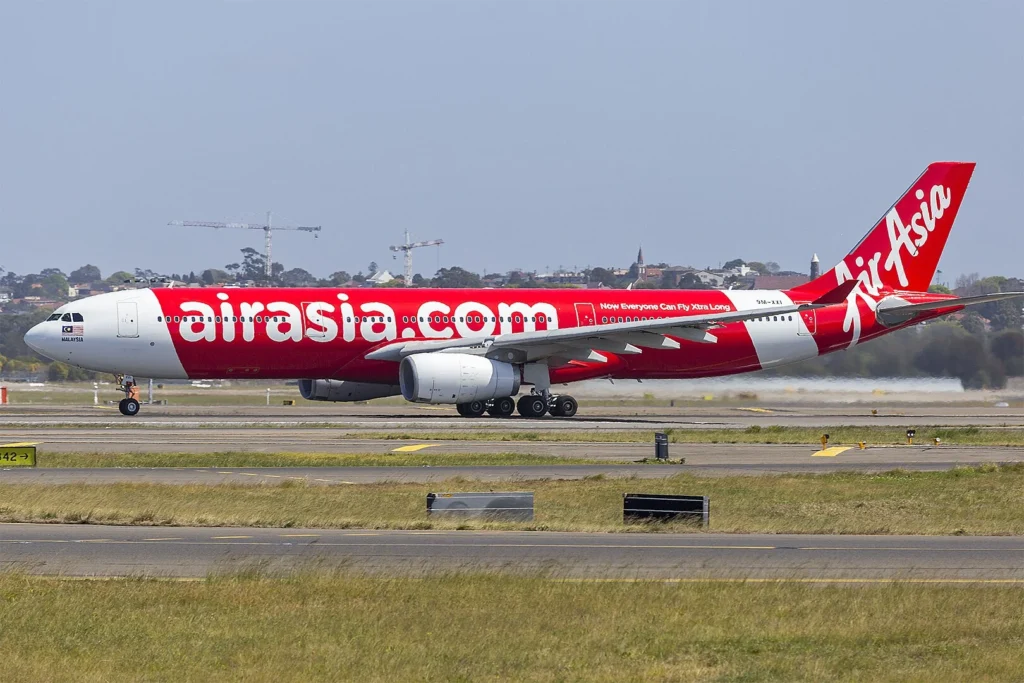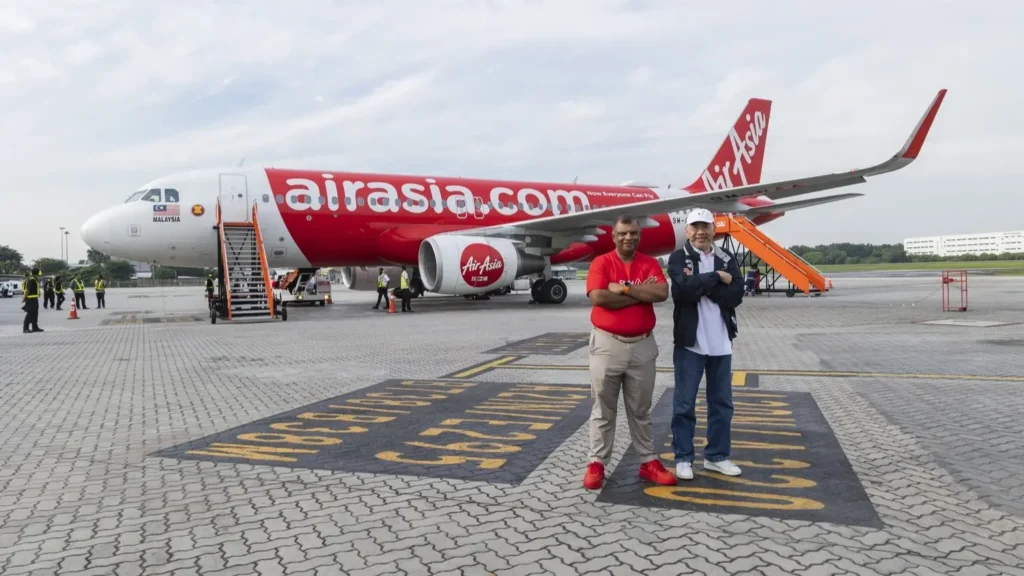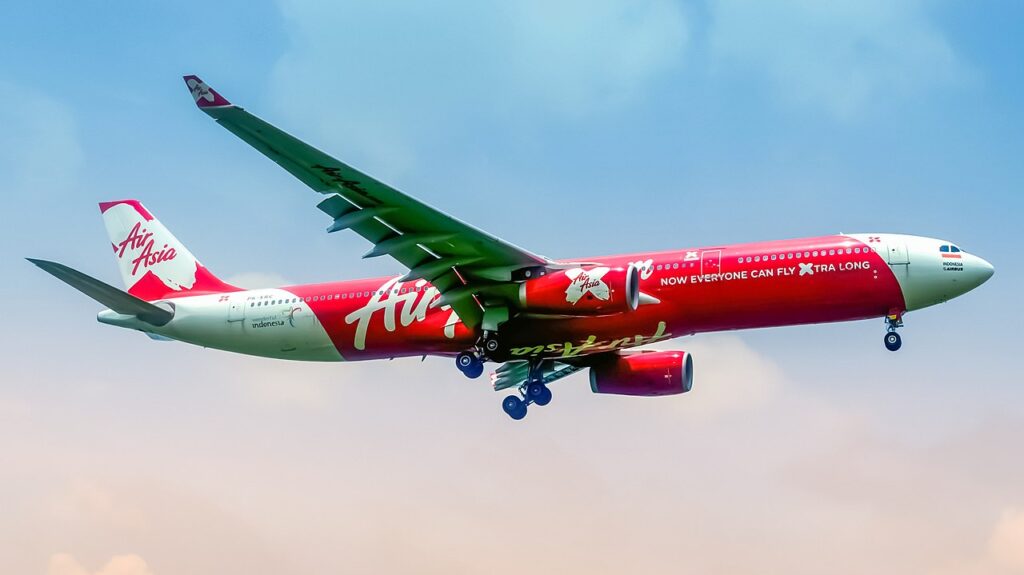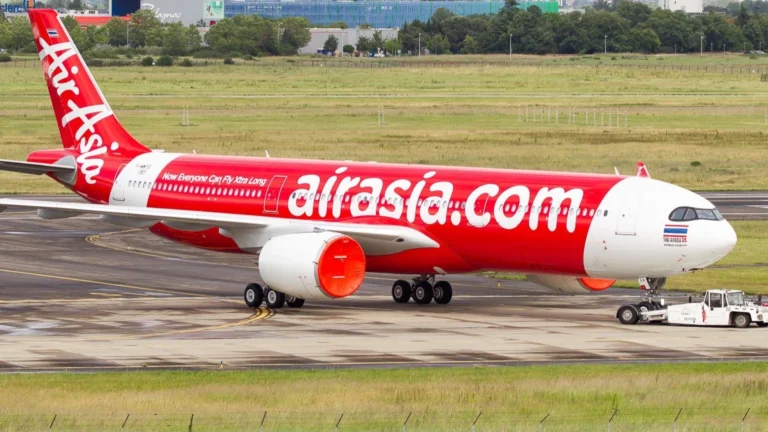SEPANG- AirAsia (AK) has announced an aggressive growth strategy to extend its reach to Europe and potentially the West Coast of the United States by 2030.
The Malaysian low-cost carrier plans to significantly expand its network and fleet over the next five years, focusing on secondary cities in key Asian regions.

AirAsia US and Europe Flights
In 2025, AirAsia will increase its international network by eight destinations, growing from 98 to 106. The airline’s operational fleet will expand from 63 to 76 aircraft, a 21% increase. This growth will support a rise in daily flights from 230 to 258, a 12% boost.
Tony Fernandes, AirAsia group advisor, revealed plans to enter “strategic markets” in the Pacific and East Asia in 2026-2027. By 2028, the airline aims to expand into the Middle East and Central Asia, with Oman, Uzbekistan, and Mongolia as potential new markets.
This expansion strategy will cement Kuala Lumpur’s position as the world’s leading low-cost carrier mega hub, establishing Malaysia as the prime center for affordable travel by 2025.
The airline’s growth will enhance its capacity to meet rising travel demand across established and emerging markets in Asia, Africa, and the Middle East.
AirAsia’s ambitious plan reflects the increasing global demand for low-cost travel options and the airline’s confidence in the post-pandemic recovery of the aviation industry. The strategy also highlights the carrier’s intent to compete globally, challenging established carriers in long-haul markets.
The expansion plans into Europe and potentially the US West Coast by 2030 marks a significant milestone for AirAsia, traditionally known for its short and medium-haul operations.

CEO Remarks
Tony Fernandes, CEO of Capital A and Advisor to AirAsia Aviation Group, revealed this strategy following a crucial Extraordinary General Meeting (EGM).
The EGM results mark a significant milestone in AirAsia’s efforts to consolidate its aviation businesses and strengthen its focus on aviation services. This move aims to unlock substantial growth opportunities and position ASEAN as a global air travel hub comparable to Dubai.
KLIA currently ranks as the second most connected airport globally, according to the 2024 OAG Megahubs Index, surpassed only by London Heathrow. The airport offers over 14,500 possible low-cost connections across 137 destinations, with AirAsia’s extensive network playing a pivotal role in this connectivity.
AirAsia and AirAsia X airlines dominate KLIA’s operations, accounting for 43% of all flights and 74% of the airport’s total low-cost carrier capacity. This strong presence has solidified Kuala Lumpur’s position as a regional hub, outpacing competitors like Singapore and Bangkok.

AirAsia X
Capital A has obtained overwhelming shareholder support for the disposal of its aviation business to sister carrier AirAsia X. At an extraordinary general meeting on October 14, 99.97% of Capital A shareholders voted in favor of the divestment plan.
This decisive move follows Capital A’s initial announcement in January, outlining the divestment strategy as a key component of its business restructuring efforts. The plan aims to extricate the company from its financially distressed status and pave the way for a more streamlined operational focus.
The proposed deal now awaits approval from AirAsia X shareholders, with their extraordinary general meeting scheduled for October 16. If AirAsia X shareholders endorse the acquisition, the transaction is expected to conclude by the end of this year.
Capital A’s exit from PN17 status drives AirAsia Group’s operational streamlining and long-term aviation sector growth. The merger of short-haul and long-haul operations within AirAsia Group enhances efficiency and profitability.
Feature Image by: Clément Alloing (@CAlloing) / X
Stay tuned with us. Further, follow us on social media for the latest updates.
Join us on Telegram Group for the Latest Aviation Updates. Subsequently, follow us on Google News

